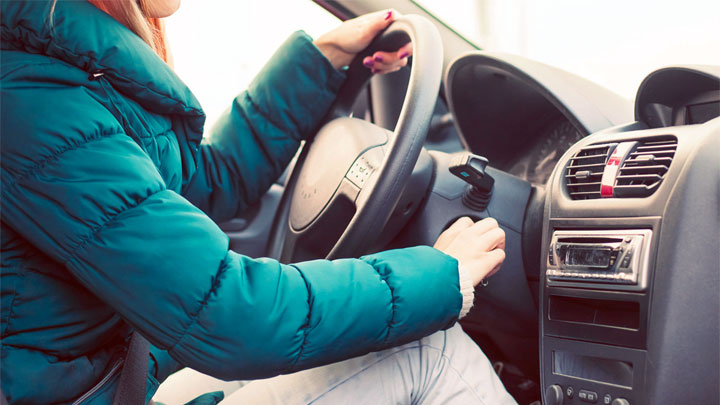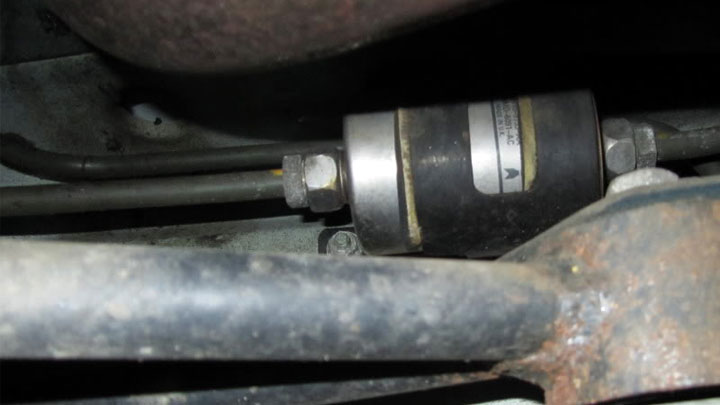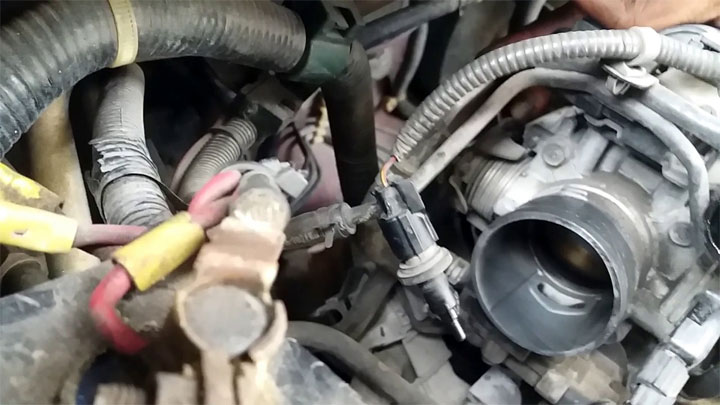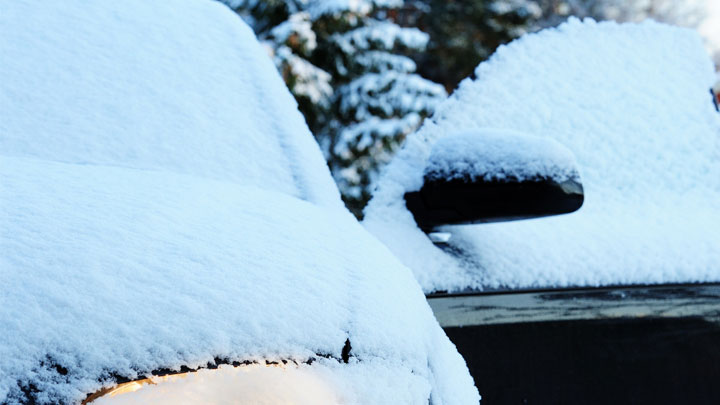4 Causes of a Car Engine That Cranks But Won’t Start
Your car engine cranks but just won’t start. You turn the key again and again, but all you get is the dreaded click-click-click sound.
What could be preventing your engine from starting up? Read on to learn about the most common causes of a cranking engine that refuses to start so you can identify the culprit and get your car back on the road.

Related: 4 Reasons a Starter Spins But Doesn’t Engage
Cranking vs Starting
Cranking an Engine
When you turn the key in the ignition, the starter motor engages and turns the flywheel which then turns the engine crankshaft. This is the cranking process (also referred to as turning over). It rotates the engine, but it hasn’t started yet. Cranking only turns the engine over.
Starting an Engine
Starting is when the engine actually fires up and begins running on its own power. For the engine to start, it needs three things during cranking: fuel, compression, and spark. When these are present, the combustion process will begin and the engine will start.
Reasons a Car Turns Over But Won’t Start
As already mentioned, turning a key in the ignition or pressing a “push start” button engages the starter motor which rotates the flywheel and eventually the crankshaft. Sometimes this process is interrupted when there is a hitch in the system, and the car engine won’t continue to run after it “turns over” or cranks.
For the engine to start normally, it requires sufficient fuel pressure, an appropriately timed spark and normal compression. When it doesn’t start, the problem usually lies with one of these systems though the starter system can also be the culprit.
Here are the most common reasons this may be happening.
#1 – Spark Problems

Lack of spark may occur due to a damaged ignition module, a faulty crank position sensor, a flooded engine (sometimes happens in older or high-mileage cars), bad spark plugs, or a problem in the ignition circuit, such as the wiring, security system (the fuel flow may have been shut off to prevent theft or the chip in the key could be faulty), or a malfunctioning ignition switch.
An inappropriately timed spark can occur if there’s an issue with the timing system. This can be difficult to diagnose, but a timing light is a useful tool to check that all the cylinders are firing exactly when they are supposed to.
To determine if there is a problem with the spark, visually check the distributor and its cap (if your vehicle has one) and the spark plug wires, as these may degrade with age. A spark tester should be used to check for a proper arc from each spark plug wire or coil.
If you suspect the engine may be flooded after repeated attempts to start the car, remove the spark plugs and let them dry, then replace them and try again.
Related: Symptoms of a Hydrolocked Engine
#2 – Lack of Fuel Flow

Problems with fuel pressure and flow may be due to a damaged fuse for the fuel pump, a bad fuel pump, contaminated or incorrect fuel in the tank, a faulty or clogged fuel filter or injector, or simply an empty fuel tank (the fuel gauge is not always accurate).
Having the appropriate fuel pressure is important for your car engine to start or run, especially for fuel-injected engines. Listen to hear the fuel pump buzz for a few seconds as you turn the ignition to the “on” position.
If no buzz is heard from inside the car or back by the fuel tank, the pump may be dead and fuel is not reaching the engine at all.
Note that some fuel pumps only flow while the car is cranking so some cars don’t have an audible buzz. Consult the internet or your owner’s manual for more information for your specific model.
If you do hear the buzz of the fuel pump, you can try putting a flathead screwdriver on top of each injector (with the handle next to your ear) while the car is cranking. If the injectors are firing, you will hear a faint ticking sound from each injector, transmitted by the shaft of the screwdriver.
Some cars have a safety feature called an inertia switch which shuts off the flow of fuel automatically after an impact. If your vehicle recently sustained an impact, check your owner’s manual to see if this feature is present in your vehicle and learn how to manually switch it to allow fuel to flow again.
Related: What to Do if Your Car Breaks Down
#3 – Low compression

Each cylinder needs compression for correct engine function. The compression ratio compares the maximum cylinder volume to the minimum cylinder volume during each stroke of the piston. If one or more cylinders have low compression, air from the combustion cycle leaks past the piston rings which limits the amount of work that cylinder can do to spin the crankshaft.
Compression problems can be caused by a broken or loose timing belt or chain or a snapped overhead camshaft. An overheated engine is another severe problem that can prevent your car from starting.
Try using a compression gauge or tester to see if you have a problem with the compression in your car. If so, a leak down test is a secondary test to check for leaks in the cylinder. A professional mechanic can perform these tests and examine the cylinders if you don’t feel comfortable checking yourself.
#4 – Power Supply Problems

Another possible problem is a weak starter motor that uses a lot of amps to crank the engine, then doesn’t have much juice left to switch on the fuel injectors and ignition system. In this case, you will probably notice that the starter makes an unusual noise when you attempt to crank the engine or it doesn’t turn over at all.
Weak or corroded battery cables or a dying battery can contribute to the problem as well. Check the voltage of the battery with a multimeter while cranking the engine. It should show over 10 volts.
Check for blown fuses by visually removing and inspecting the wiring of each fuse when the car is shut off. If they appear to be in good condition, put them back in then try turning the car ignition into the “on” position and using a test light to check each fuse for electrical current flow. Replace any damaged fuses with new ones from an auto supply store.
Related: 7 Reasons a Car Starts Then Immediately Dies
Additional Less-Likely Causes
- Faulty sensors – The engine control module (ECM) uses data from various sensors to control engine functions. A malfunctioning sensor, like a crankshaft position sensor or camshaft position sensor, can prevent your car from starting.
- Ignition system issues – A weak or failing ignition coil can cause a no-start situation. Additionally, if the spark plugs or wires are worn, it may also result in the engine not starting.
- Fuses and relays – Check the fuse box for blown fuses or malfunctioning relays related to the ignition and fuel systems. You can usually find an identification diagram on the fuse box or in the owner’s manual. Replace any blown fuses or faulty relays to see if this resolves the issue.
- Anti-theft system activation – If the security system has been inadvertently activated, your car might crank but not start. Consult your vehicle’s owner’s manual (or aftermarket alarm manual) to find out how to reset or deactivate the system.
- Transponder key problems – Transponder keys have a chip in them that sends a signal to the car’s immobilizer. If the chip is damaged or the signal is weak, the immobilizer will not recognize the key and will prevent the engine from starting. You may need to replace the key or have it reprogrammed.
Troubleshooting Advice

- If the engine cranks but won’t start, turn the car off and remove the air inlet tube attached to the throttle body. Then spray a small quantity of starting fluid into the engine after gently pushing the throttle open. With that done, try cranking the engine once again.
- If the engine starts but dies after a few seconds, this means that it has no fuel but the spark and compression are okay. However, if the engine does not start, it almost certainly lacks spark.
- Avoid repeatedly cranking the car engine to try to make it start, as this can wear out the starter or drain the battery.
- If you must try multiple times, wait several minutes for every 15 seconds of cranking performed to allow the starter to cool down. It shouldn’t take more than a couple seconds per attempt to know if you’ve resolved the issue.
- Checking sensors and actuators for problems is critical, as modern cars have a variety of electrical components that can cause failure in the engine starting process.
- Modern cars have a variety of electrical components that can cause failure and checking for logged trouble codes with a scan tool is how it’s done. Buying an OBD2 scan tool is an excellent investment (they don’t cost much).
- For example, if scanning shows DTC P1682, there is imbalance in the ignition circuit that could prevent you car from starting.
FAQs
How Does Cold Weather Impact a Car Starting?

Cold weather can affect your car starting in several ways. First, it can slow down chemical reactions inside the battery, reducing its overall power output. If the battery’s charge is already low, it might not have enough juice to crank the engine and start the car.
Cold temperatures can also cause fuel to become more viscous, making it harder to flow through the fuel lines and reach the engine. Going further, cold weather can lead to problems with the engine oil, causing it to thicken and make starting the car more difficult.
Why Would a Car Struggle to Start Even With a Jump?
Although a jump-start often serves as a quick fix for a dead battery, sometimes your car might still struggle to start even with a jump. A few reasons could explain this scenario, such as a faulty starter motor, fuel delivery problems, or issues with the ignition system.
The issue might also stem from a damaged alternator, which fails to recharge the battery properly. Corroded or loose battery connections might also hinder the jump-start process, so always confirm they’re clean and snug before attempting a jump-start.
Are the Causes in a Diesel Engine the Same?
While some of the causes for a car engine that cranks but won’t start are similar in both gasoline and diesel engines, there are some differences.
Diesel engines use compression ignition, so problems with glow plugs or high pressure fuel pumps can prevent the engine from starting. Diesel engines are also more sensitive to fuel quality, and using low-quality diesel or contaminated fuel can lead to issues when trying to start the car.
However, just like gasoline engines, issues with batteries, alternators, and starter motors can also hinder a diesel engine from starting.
- Replace the Engine or Replace the Car? (11 Factors to Consider) - Apr 11, 2024
- Plastic Piece Dragging Under Your Car? (What It Is and What To Do) - Mar 21, 2024
- Timing Belt vs Timing Chain (What’s the Difference?) - Feb 27, 2024
